Rainforests are Earth’s botanical masterpieces, hosting an astonishing variety of flora. With over 50% of the world’s plant species estimated at 40,000–80,000 packed into just 6% of the planet’s land, understanding what type of plants are in the rainforest reveals nature’s complexity. This guide explores the major plant categories in tropical rainforests (Amazon, Congo, Southeast Asia) and temperate rainforests (Pacific Northwest, New Zealand), focusing on their adaptations, ecological roles, and human uses. From towering trees to delicate mosses, we’ll cover the layered structure of rainforests and iconic species, drawing from sources like National Geographic, WWF, Smithsonian, Kew Gardens, and Rainforest Alliance. Whether you’re a student, plant enthusiast, or eco-conscious reader, this article answers “what type of plants are in the rainforest” with clarity and depth.
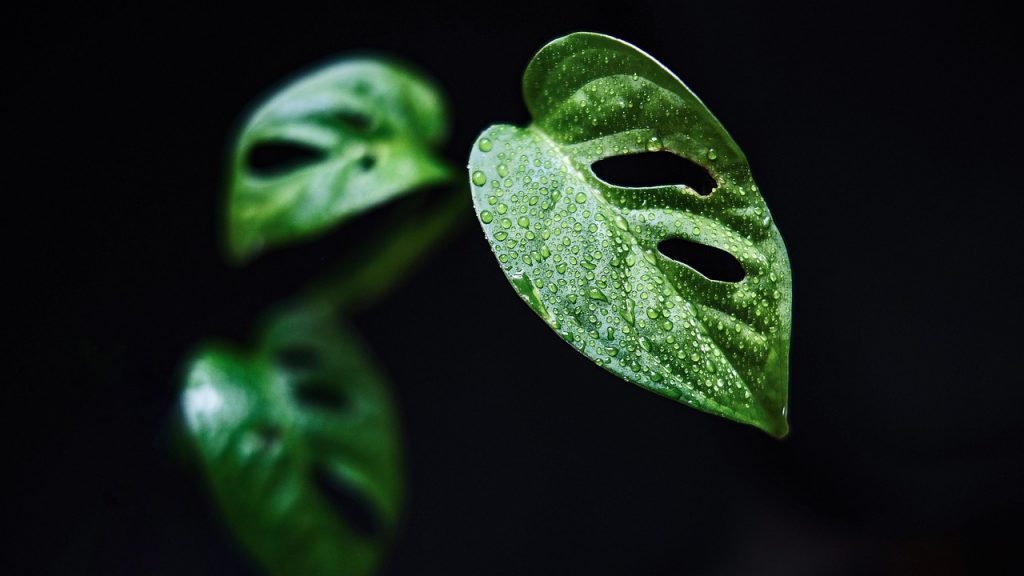
What Are Rainforests?
Rainforests are dense, biodiverse forests defined by high rainfall, often exceeding 80 inches annually. Tropical rainforests, found near the equator in regions like South America, Africa, and Southeast Asia, thrive in warm, humid conditions, supporting the richest array of plant life. Temperate rainforests, located in cooler areas like North America’s Pacific Northwest or Tasmania, have milder climates but still host diverse flora. To understand what type of plants are in the rainforest, we must explore their stratified ecosystems, where plants are adapted to specific layers based on light, humidity, and nutrients.
Rainforest Plant Layers (Strata)
Rainforest plants are organized into four strata, emergent, canopy, understory, and forest floor, each with unique conditions shaping what type of plants are in the rainforest. Below, we explore these layers and their characteristic flora.
Emergent Layer
The emergent layer features the tallest trees, soaring 100–200 feet to capture direct sunlight. These giants face strong winds and intense heat.
- Examples: Kapok tree, Brazil nut tree
- Adaptations: Tall trunks for height, buttress roots for stability in nutrient-poor soils.
Canopy Layer
The canopy, at 60–130 feet, forms a dense foliage “roof,” intercepting most sunlight and creating shade below. It’s a biodiversity hotspot for what type of plants are in the rainforest.
- Examples: Orchids, bromeliads, lianas, strangler figs
- Adaptations: Epiphytes grow on branches for light, vines climb for support.
Understory Layer
The understory, receiving 2–15% of sunlight, is dim and humid, ideal for shade-tolerant plants.
- Examples: Ferns, philodendrons, heliconia
- Adaptations: Large leaves capture limited light, compact growth suits low-light conditions.
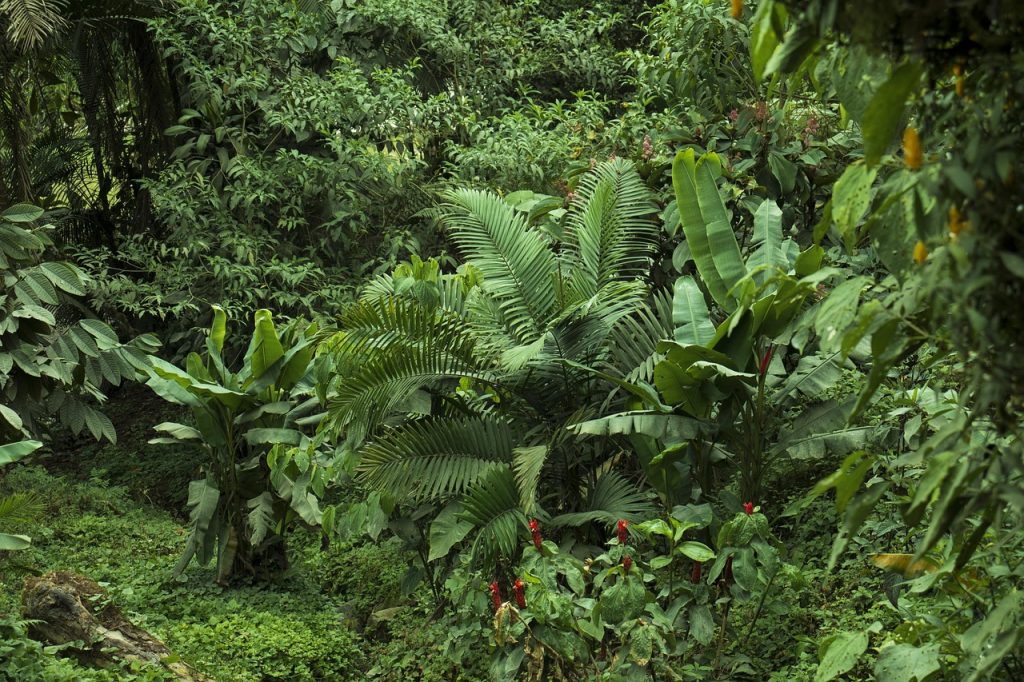
Forest Floor
The dark forest floor, with less than 2% sunlight, is covered in decaying matter, supporting unique plants.
- Examples: Mosses, fungi, low-growing herbs
- Adaptations: Nutrient recycling from decay, tolerance for minimal light.
Rainforest Plant Layers
| Layer | Plant Types | Examples | Adaptations |
|---|---|---|---|
| Emergent | Tall trees | Kapok, Brazil nut | Buttress roots, fast growth |
| Canopy | Epiphytes, vines | Orchids, lianas | Aerial roots, climbing ability |
| Understory | Shrubs, ferns | Heliconia, philodendrons | Large leaves, shade tolerance |
| Forest Floor | Mosses, fungi | Mosses, herbs | Nutrient recycling, low-light adaptation |
Trees of the Rainforest
Trees are the structural pillars of rainforests, shaping the ecosystem and supporting diverse life. Exploring what type of plants are in the rainforest starts with these giants, adapted for light competition and poor soils.
- Kapok Tree (Ceiba pentandra)
- Region: Amazon, Central America, West Africa
- Features: Reaches 200 feet with buttress roots up to 10 feet wide. Its seed fibers are used in pillows and mattresses.
- Adaptation: Rapid growth (13 feet/year), buttress roots stabilize in shallow soil.
- Brazil Nut Tree (Bertholletia excelsa)
- Region: Amazon
- Features: Grows to 160 feet, producing nuts in hard pods. Relies on specific bees for pollination.
- Adaptation: Tall stature for canopy dominance, thick bark resists damage.
- Mahogany (Swietenia macrophylla)
- Region: Central and South America
- Features: Reaches 150 feet, its durable wood is used for furniture.
- Adaptation: Broad canopy for light capture, deep roots for stability.
- Rubber Tree (Hevea brasiliensis)
- Region: Amazon, Southeast Asia
- Features: Grows to 100 feet, its latex sap produces rubber.
- Adaptation: Fast growth and self-healing bark protect against injury.
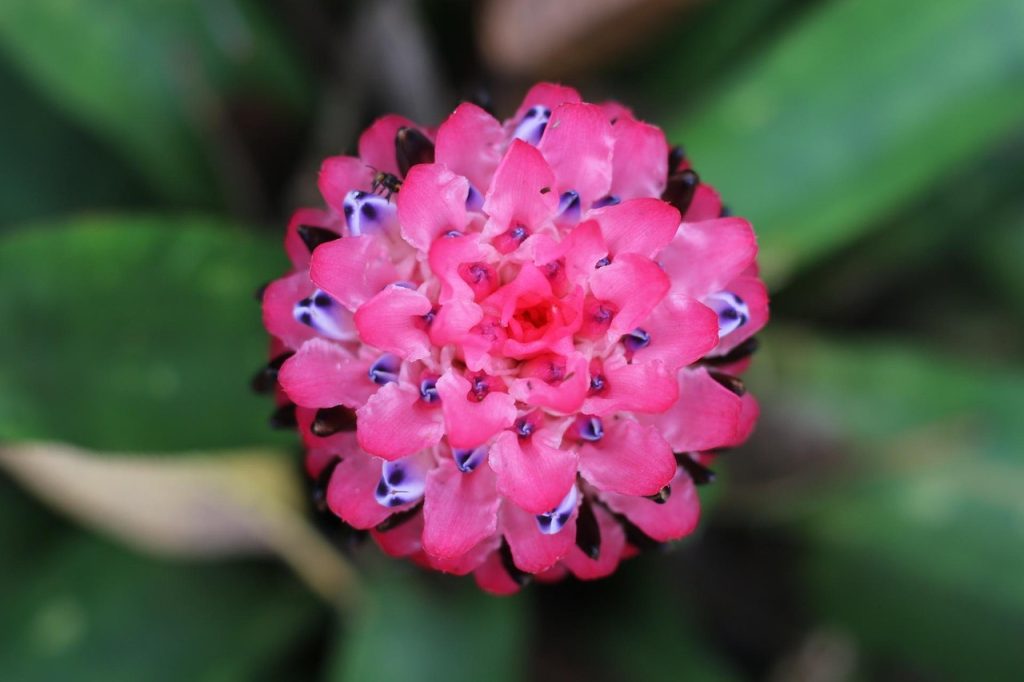
Epiphytes and Vines
Epiphytes and vines are key answers to what type of plants are in the rainforest, thriving without soil by using trees for support. They dominate the canopy and understory, often in symbiotic relationships.
- Bromeliads
- Features: Rosette-shaped plants store water in leaf “tanks” (up to 7 liters). Common in the Amazon, pineapples are a terrestrial example.
- Adaptation: Aerial roots absorb moisture, tanks support micro-ecosystems.
- Orchids
- Features: Over 25,000 species, with 10,000 in rainforests. Found in Southeast Asia and the Amazon.
- Adaptation: Epiphytic roots cling to branches, vibrant flowers attract pollinators.
- Lianas
- Features: Woody vines climb trees to reach sunlight, growing up to 3 feet annually in the Congo and Amazon.
- Adaptation: Flexible stems wrap around hosts, rapid growth outpaces competitors.
- Strangler Figs
- Features: Start as epiphytes, sending roots to envelop host trees, sometimes killing them.
- Adaptation: Bird-dispersed seeds, roots form a lattice for stability.
Epiphytes and Vines
| Plant Type | Layer | Example | Adaptation |
|---|---|---|---|
| Epiphyte | Canopy | Bromeliads | Water storage, aerial roots |
| Epiphyte | Canopy | Orchids | Epiphytic roots, pollination |
| Vine | Canopy/Understory | Lianas | Fast growth, climbing |
| Vine | Canopy | Strangler Figs | Root envelopment |
Shrubs, Ferns, and Ground Plants
The understory and forest floor host shade-tolerant plants, critical to understanding what type of plants are in the rainforest. These species thrive in low light and high humidity.
- Heliconia
- Features: Known as “lobster claws,” their vibrant flowers attract hummingbirds in Central and South America.
- Adaptation: Bright bracts for pollination, shade-tolerant leaves.
- Philodendrons
- Features: Heart-shaped leaves, popular as houseplants, thrive in the understory.
- Adaptation: Broad leaves capture dim light, climbing habit for support.
- Giant Ferns
- Features: Fronds up to 10 feet thrive in humid understory conditions.
- Adaptation: Feathery leaves maximize light absorption, spore reproduction.
- Mosses and Fungi
- Features: Carpet the forest floor, recycling nutrients from decaying matter.
- Adaptation: Thrive in low light, absorb moisture directly.
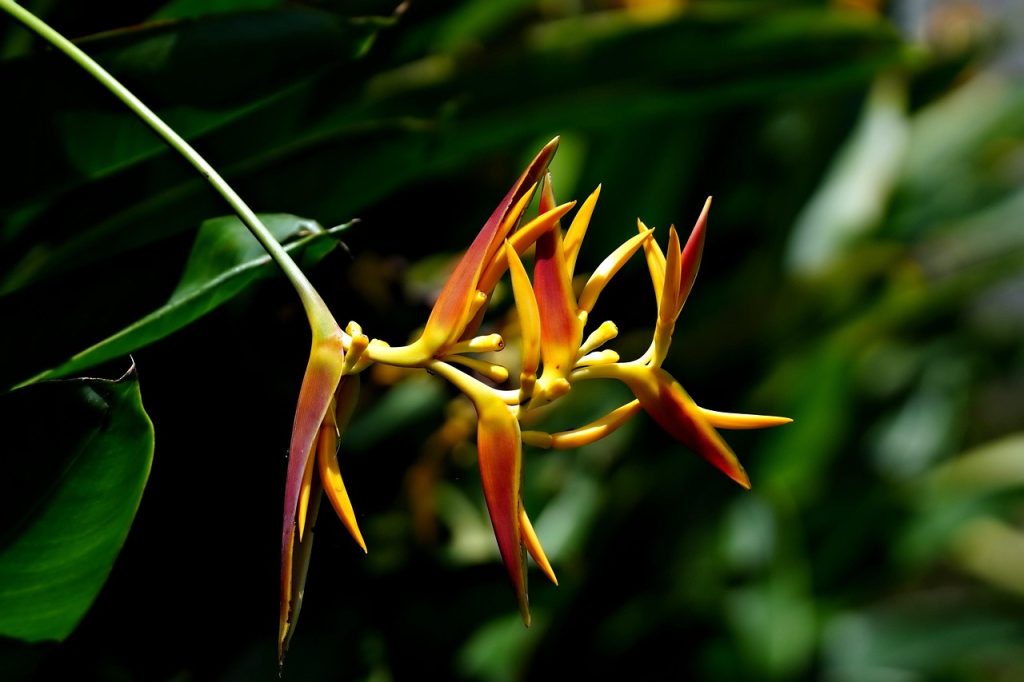
Aquatic and Semi-Aquatic Plants
In flooded forests and riverbanks, aquatic plants adapt to waterlogged conditions, especially in the Amazon and coastal rainforests.
- Victoria Amazonica (Giant Water Lily)
- Features: Leaves up to 10 feet wide support 60 pounds. Flowers shift from white to pink post-pollination.
- Adaptation: Girder-like ribs for buoyancy, thorns deter herbivores.
- Water Hyacinth (Eichhornia crassipes)
- Features: Floating plants with purple flowers, common in Amazon rivers.
- Adaptation: Air-filled stems for flotation, rapid reproduction.
- Mangroves (Rhizophora spp.)
- Features: Found in coastal rainforests with stilt roots in saline water.
- Adaptation: Salt-tolerant roots, viviparous seeds germinate on the plant.
Medicinal and Edible Rainforest Plants
Rainforest plants have sustained indigenous communities for centuries, providing food and medicine. About 25% of modern drugs derive from these species.
- Cacao (Theobroma cacao)
- Uses: Seeds produce chocolate, used by the Mayo Chinchipe 5,000 years ago.
- Features: Evergreen tree with pods containing 30–60 beans.
- Importance: Nutritional and economic value.
- Cinchona Tree
- Uses: Bark yields quinine, a malaria treatment.
- Features: Grows to 80 feet in Andean rainforests.
- Importance: Revolutionized global health.
- Curare (Chondrodendron tomentosum)
- Uses: Vine sap used as a paralytic for hunting.
- Features: Woody vine in the Amazon.
- Importance: Basis for modern anesthetics.
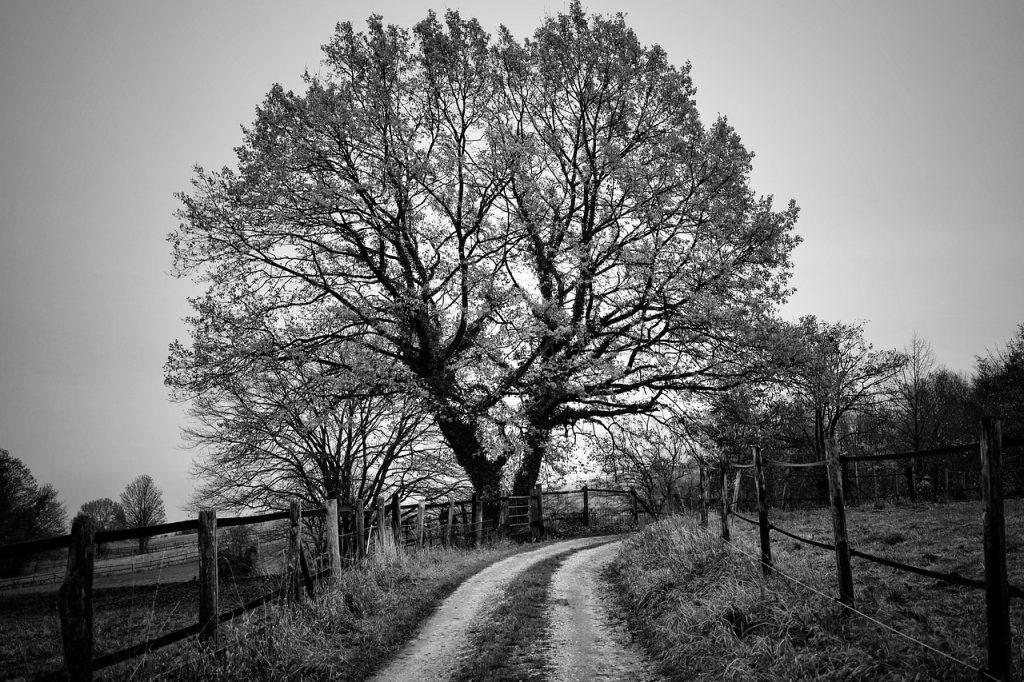
Endangered and Invasive Species
Deforestation threatens rainforest plants, with 137 species lost daily in the Amazon. Logging for mahogany and palm oil plantations in Indonesia destroy habitats. Invasive species like water hyacinth can outcompete native flora, clogging waterways. The Rainforest Alliance promotes sustainable practices to protect these vital plants.
Read More: Elephant Ear Plant Types
Fun Rainforest Plant Facts
- Fastest-Growing Vine: Lianas, like the monkey brush vine, grow up to 3 feet per year, racing to sunlight.
- Leaf Mimicry: Some orchids mimic other plants’ leaves to deter herbivores.
- Walking Tree: The walking palm (Socratea exorrhiza) shifts up to 20 meters over years using new stilt roots.
- Corpse Flower: Rafflesia arnoldii produces a 3-foot-wide flower with a rotting-flesh smell to attract flies.
FAQs About Rainforest Plants
Kapok tree, Brazil nut tree, orchids, heliconia, and giant water lily are key examples of what type of plants are in the rainforest.
Epiphytes like bromeliads, orchids, and strangler figs grow on trees, using aerial roots to absorb water and nutrients.
Yes, 10,000 orchid species are among what type of plants are in the rainforest, thriving as epiphytes in the canopy.
They develop large leaves, buttress roots, aerial roots, and bright flowers to thrive in low light, poor soil, and high humidity.
Cacao, passion fruit, bananas, and pineapples (a bromeliad) are edible rainforest plants with cultural and economic value.
Conclusion
Exploring what type of plants are in the rainforest reveals a world of botanical wonder, from kapok trees to delicate orchids. These plants, with adaptations like buttress roots and water-storing leaves, thrive in competitive, humid ecosystems. They provide oxygen, food, and medicine, 25% of modern drugs come from rainforest flora, while supporting global biodiversity. Yet, deforestation threatens this diversity, with countless species still undiscovered. By supporting conservation and learning about these plants, we can protect the planet’s green heart for future generations.